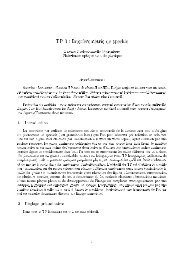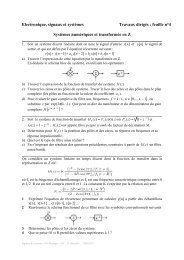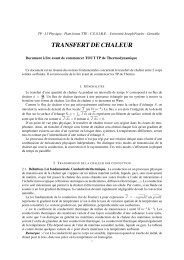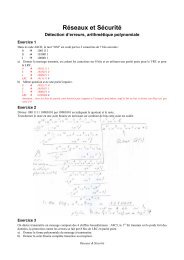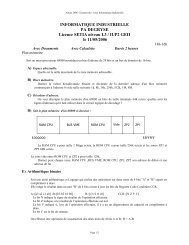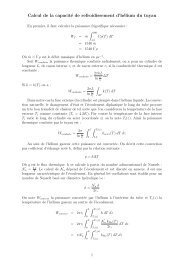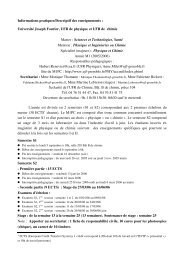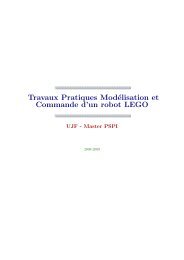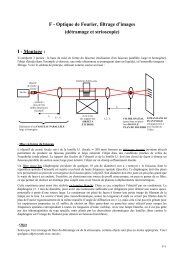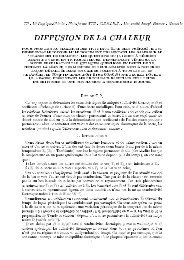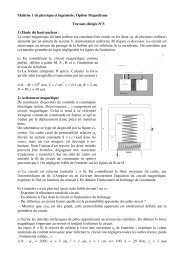Chapter 4 SINGLE PARTICLE MOTIONS 4.1 Introduction
Chapter 4 SINGLE PARTICLE MOTIONS 4.1 Introduction
Chapter 4 SINGLE PARTICLE MOTIONS 4.1 Introduction
You also want an ePaper? Increase the reach of your titles
YUMPU automatically turns print PDFs into web optimized ePapers that Google loves.
112To first order in ɛ = r/R 0 ,whereR 0 is the radius of the magnetic axis, the fieldstrength at some point in the torus is (show this)B = B 0 (1 − ɛ cos θ) (4.92)where θ is the poloidal angle coordinate with respect to the magnetic axis and B 0is the magnetic field strength on axis. (See Fig. <strong>4.1</strong>6 for the coordinate systemused here).If we now follow an electron along a helical field line, then if it starts at theoutside of the torus and moves towards the torus axis (inside), the magnetic fieldincreases. As a result, some of the electrons will be reflected (at points P and QFigure <strong>4.1</strong>6: Diagram showing toridal magnetic geometryin Fig. <strong>4.1</strong>7) by the mirror effect. The projection of the guiding centre drift ontothe R–z plane shows a banana-shaped orbit. Between the reflection points thereis an upward drift due to curvature and ∇B. Typically, the banana width fora tokamak < ∼ 0.1a where a is the minor radius. Particles with sufficiently highparallel velocity will penetrate the magnetic well and complete a toroidal circuit.These are called passing particles.




